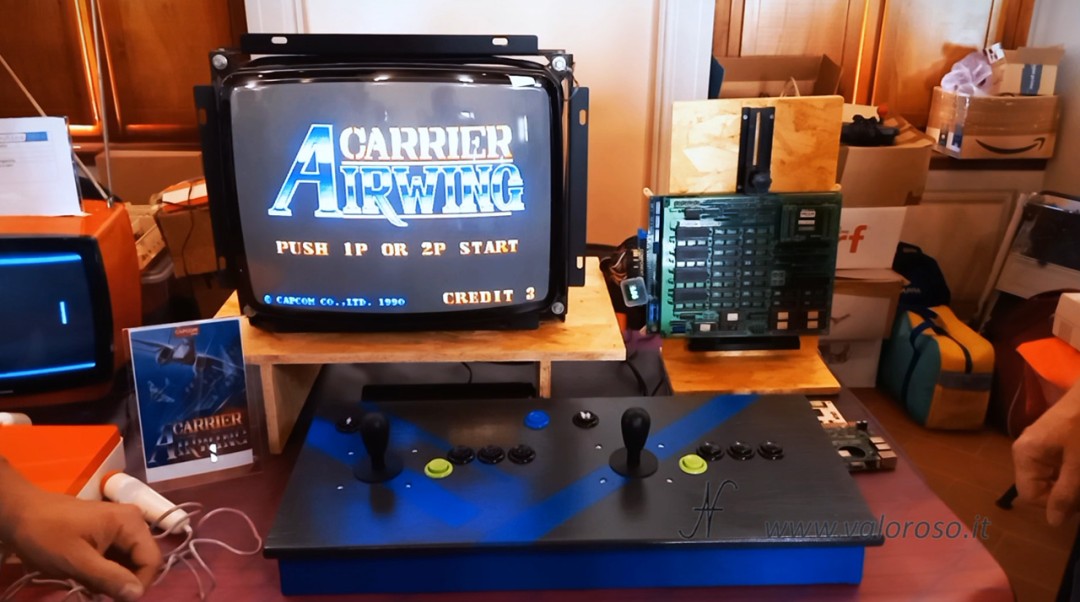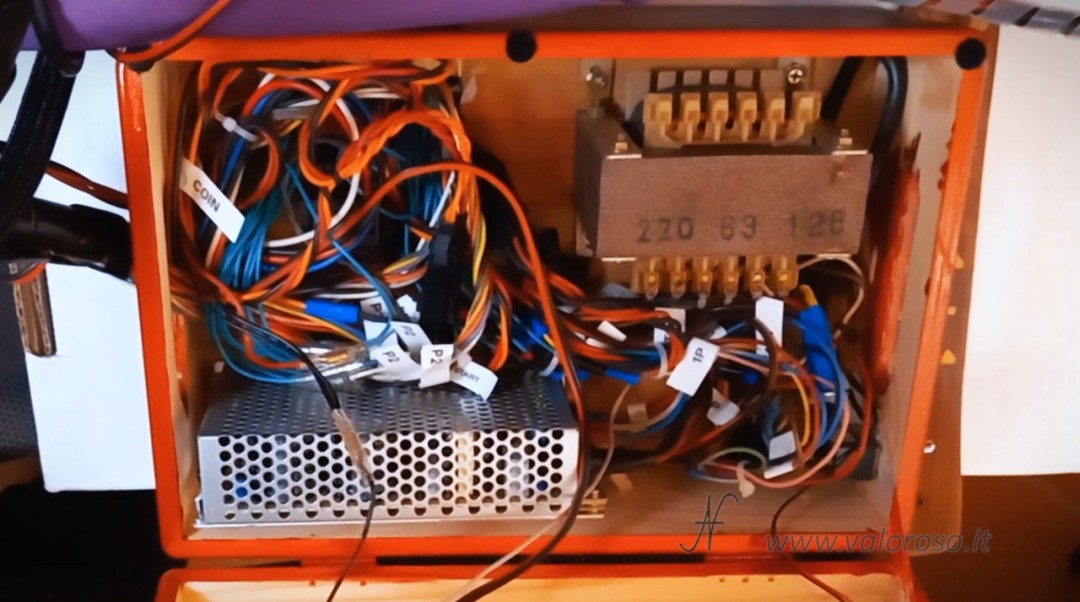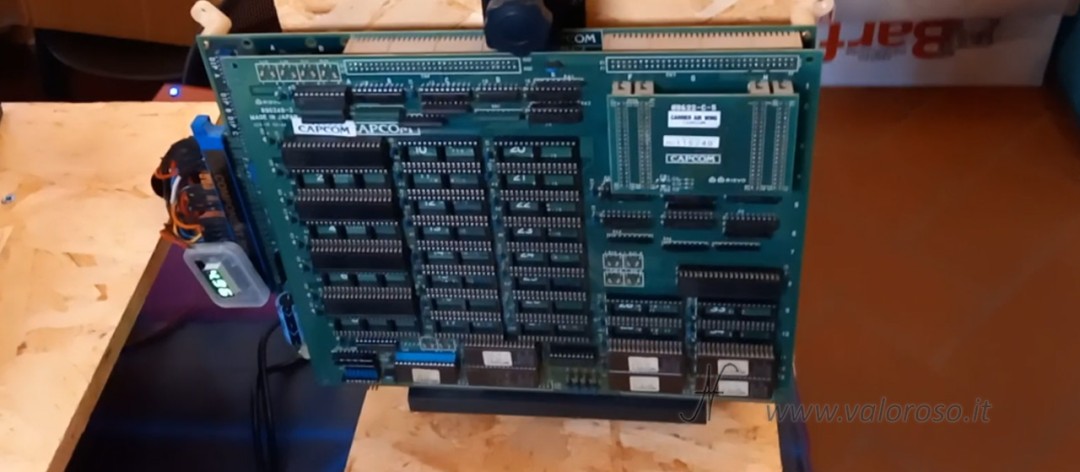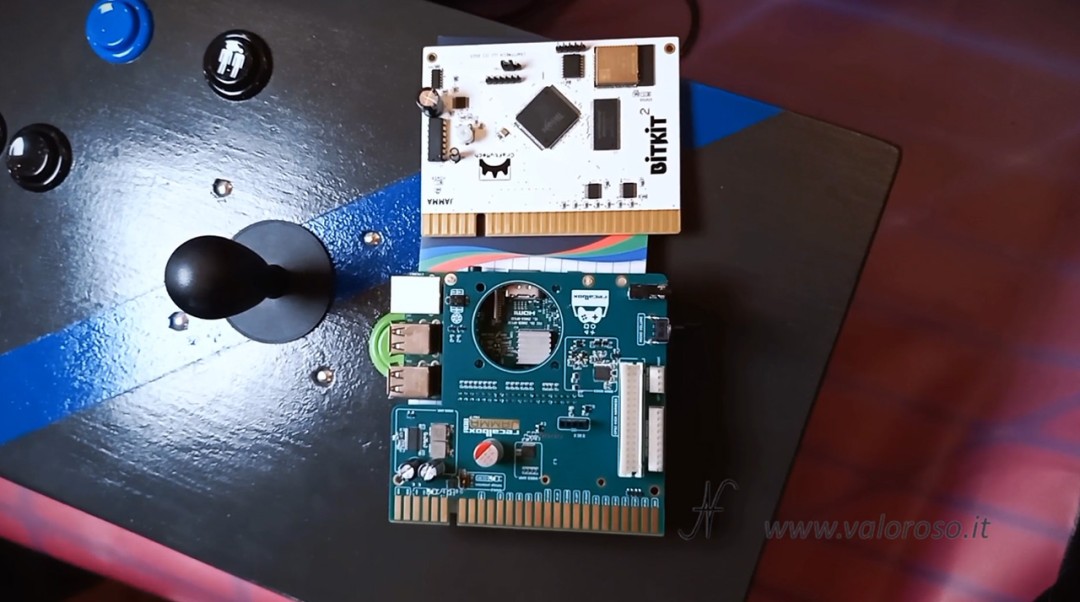The arcade (or coin-ops, "operated in money", as they are often called) have marked an era. From the 70s until the early 90s, these entertainment giants dominated the games rooms, bars and fairs, offering unique videogame experiences that have fascinated millions of people all over the world. But what's behind these mythical cabinets? What are the differences between the original components and the modern cards that many fans use to restore or recreate these machines? In an exclusive interview for Valorosoit, recorded at the Varese Retrocomputing 2024, I had the pleasure of talking to Stefan Dawid by Gerundo Retrogaming, an Arcade cabin expert.

A blast from the past: the original components of the Arcade cabinets
The original arcade cabinets of the 80s were real jewels of the technology of that time. The heart of each cabiny was represented by the motherboard: the printed circuit (PCB) that contained the hardware and the game software. Many more dated arcade cabinets used single game cards, where each machine was dedicated exclusively to a single title, such as Pac-Man and Space Invaders. These games, which today we can safely perform on emulators, required specific hardware for each cabinet.

With the growth of the Arcade cabinet business, the creation and diffusion of the so-called "bootleg" cards (pirated copies) began and therefore the original manufacturers ran for cover by starting to insert proprietary anti-copy chips in the PCBs of the games.
Capcom, for example, created a dedicated daughterboard (C-board) in its Capcom Play System 1 cards (CPS-1, 1998) and later introduced ROM encryption and a Suicide Battery in the CPS-2 (1993, with Street Figher II)
The monitor was another crucial component. In classic arcade cabinets, cathode ray tube (CRT) monitors were used, which offered sharp images with color depth and impressive viewing quality for the time.
Another distinctive element were the joysticks and mechanical buttons, which guaranteed a unique tactile feeling and remarkable robustness, also thanks to electromechanical microswitches.

Finally, the last component described in the video is the multi-voltage power supply. In addition to the three supply voltages of the JAMMA board (+5V, -5V, and +12V), the power supply also had to generate the voltages to power the CRT monitor.

These original components have now become coveted among collectors and retrogaming enthusiasts. There are still manufacturers of joysticks and Arcade buttons, mostly Japanese companies.
The Jamma standard and the evolution of coin-op
With the introduction of the Jamma standard (Japan Amusement Machinery Manufacturers Association) in the mid -1980s, the world of Arcade cabinets suffered a real revolution. Before then, each Arcade games manufacturer adopted its own standard of connection of the game PCBs inside the cabin. He therefore made the replacement or updating of games difficult and expensive inside a games room. With Jamma, however, it became possible to use the same cabin for different games, simply by replacing the game card regardless of the specific game producer. Since Japan designed most of the games, in the 90s the Jamma became in fact the world standard.

The JAMMA standard provides a 56-pin connection. In a single connector there are the power supply voltages, the signals of the joysticks and buttons, the coin mechanism and the monitor.

This type of modularity brought many advantages to operators, who could easily update or replace games without having to change the entire cabinet structure. Marchi such as Capcom, Namco, Sega, Konami and then Atari also began to use the Jamma standard for their titles.
During our interview, Stefan explained how the modularity of the JAMMA cabinets made it possible to update games, keeping the Arcade experience alive for several years, even when players' tastes changed.
The brands of Arcade cabinets
We cannot talk about Arcade cabinets without mentioning some of the most important brands that dominated the market in the golden years of arcades. Atari, a pioneer in the sector, with games such as Asteroids and Pong. Taito with Space Invaders: a legend (perhaps true) has it that the Japanese mint had to increase the production of coins to meet the demand of video game players. Namco with Pac-Man, initially called Puck-Man but modified to avoid dangerous assonances. Konami, with titles such as Frogger and Teenage Mutant Ninja Turtles. Capcom brought the fighting game genre with games like Street Fighter II. Finally, Sega with its OutRun driving cab.
Modern boards: FPGA and Raspberry
Today, the world of retrogaming offers different solutions for those who want to relive the experience of coin-ops without the need to have an original cabin available. One of the most innovative technologies is the FPGA (Field-Programmable Gate Array), which allows you to emulate the original hardware of the Arcade cabinets in an extremely accurate way. For example, Bitkit is an FPGA of US production card that can perform various classic arcade games, faithfully recreating the behavior of the original cards.
Another popular solution for retrogaming enthusiasts is the use of Raspberry Pi with dedicated software platforms such as backgrounds, Recalbox, Lakka and others. It is possible to emulate thousands of arcade and console games on a single device, offering a modern arcade experience at a relatively low cost. Not only is it possible to use modern TV and monitors, via HDMI, but also old CT (cathodic tube), through special hardware settings and options.

However, as Stefan points out, software emulation, while great for those who want a more accessible experience, doesn't always reach the level of fidelity of the original hardware or FPGA. On the subject of FPGA vs software emulation, there is also a continuous discussion and opposing fronts among purists, also considering the continuous evolution of both areas.
Stefan also told us how some fans are combining the best of the two worlds, using original cabinets or reproductions of them, but with modern cards inside, see Bitkit. In this way, it is possible to maintain vintage aesthetics, but with a technology that allows you to load numerous games, faithfully reproduced.
Subscribe to my channel and stay up to date
If you are passionate about retrocomputers and the world of retrogaming, don't miss these exclusive retro-explorations! Subscribe to the YouTube channel (@ValorosoIT) to access experiments, interviews, and all vintage content. I am also present on TikTok, Instagram, Facebook...